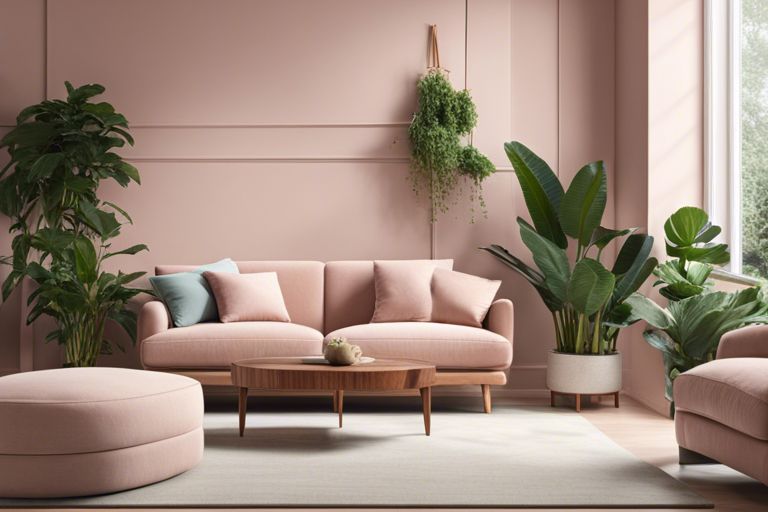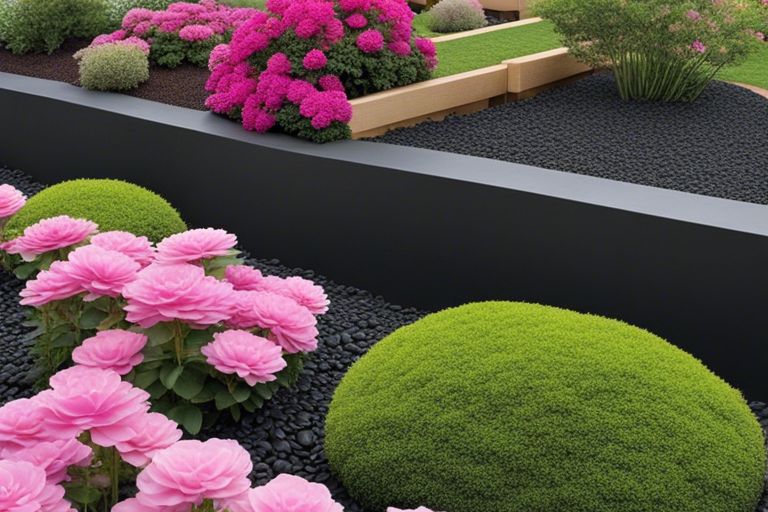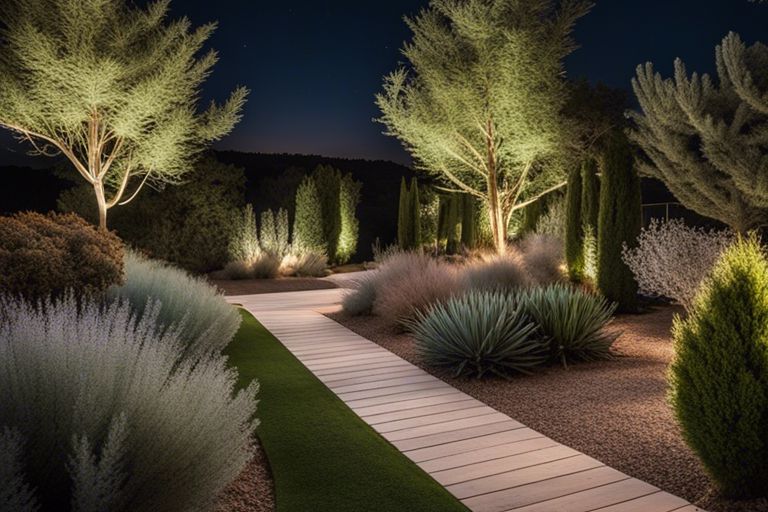Wellness begins at home, where biophilic elements can transform your living spaces into tranquil sanctuaries. Incorporating natural elements like plants, natural light, water features, and organic textures can improve your overall well-being by reducing stress, increasing productivity, and fostering a sense of connection to nature. Embrace the beauty of biophilic design in your home and reap the benefits of a harmonious living environment that nurtures both your body and soul.

Key Takeaways:
- Bringing Nature Indoors: Incorporating biophilic elements like plants, natural light, and wooden furniture can help create a connection with nature inside your living spaces.
- Improving Well-being: Biophilic design has been shown to reduce stress, improve mood, and increase productivity, making your home a more peaceful and comfortable environment.
- Enhancing Aesthetics: Adding biophilic elements such as green walls, water features, and natural materials can enhance the beauty and visual appeal of your living spaces, creating a calming and inviting atmosphere.
The Importance of Biophilia
A deep connection with nature is imperative for your overall well-being. Biophilia suggests that humans are naturally drawn to the natural world, and incorporating biophilic elements into your living spaces can have a positive impact on your physical and mental health.
Connecting with Nature
One way to enhance your living spaces is to bring elements of nature indoors. By introducing plants, natural light, and water features, you can create a sense of calm and tranquility in your home. Nature-inspired decor, such as wood furniture and earthy color palettes, can also help you feel more connected to the outdoors.
Improving Mental Health
Mental well-being is closely tied to our environment, and incorporating biophilic elements can have a positive impact on your mood and mindset. Research has shown that spending time in nature or even just looking at natural scenes can reduce stress levels, improve cognitive function, and boost creativity.
The importance of biophilia in your living spaces cannot be overstated. By fostering a strong connection with nature, you can create a sanctuary for yourself where you can relax, recharge, and thrive. Embracing biophilic design principles can lead to a happier, healthier, and more harmonious lifestyle.
Natural Light and Ventilation
Benefits of Natural Light
You will find that incorporating natural light into your living spaces can have numerous benefits. Natural light can help improve your mood, increase productivity, and even boost your overall well-being. Exposure to sunlight helps regulate the body’s circadian rhythm, leading to better sleep patterns and a more balanced mood.
Designing for Optimal Ventilation
Optimal ventilation is crucial for maintaining a healthy and comfortable living environment. When designing your space, consider cross-ventilation to allow for fresh air to circulate throughout the room. This can help reduce indoor pollutants and prevent the buildup of mold and mildew, which can be harmful to your health.
Ventilation is also crucial for regulating indoor temperatures, especially during warmer months. You can design your space with large windows and strategically placed vents to encourage natural airflow and keep your home cool and comfortable.
Incorporating Plants and Greenery
Unlike 5 ways to incorporate biophilic design into your living spaces, incorporating plants and greenery into your living spaces can have a profound impact on your well-being. The presence of nature indoors can improve air quality, reduce stress levels, and increase productivity.
Air-Purifying Plants
For cleaner and fresher indoor air, consider introducing air-purifying plants such as peace lilies, spider plants, or pothos. These plants not only add a touch of greenery but also help remove toxins from the air, creating a healthier environment for you to thrive in. You can place them on shelves, desks, or hang them from the ceiling to maximize their air-purifying benefits.
Vertical Gardens and Living Walls
An innovative way to incorporate biophilic elements into your living space is by installing vertical gardens or living walls. These vertical plantings not only save space but also create a stunning visual impact. You can create your own living artwork by combining different plant textures and colors to transform a bland wall into a vibrant green oasis.
Incorporating vertical gardens and living walls can also improve indoor air quality, regulate humidity levels, and enhance acoustics in your home. These green installations not only serve as a design feature but also contribute to a healthier and more aesthetically pleasing living environment.
Indoor Herb Gardens
An excellent way to bring nature indoors is by starting your own indoor herb garden. Herbs like basil, mint, and rosemary not only add fragrance and flavor to your meals but also contribute to a biophilic living space. You can place small pots of herbs on your kitchen windowsill or dedicate a corner of your living room to a mini herb garden, bringing the beauty and benefits of nature into your home.
Understanding how to care for your indoor herb garden is crucial for ensuring their longevity. Make sure to provide adequate sunlight, water, and drainage for your herbs to thrive. Additionally, regular pruning and harvesting will not only promote growth but also allow you to enjoy fresh herbs in your cooking, further enhancing your connection to nature within your living space.
Water Features and Acoustics
Calming Sounds of Water
Your biophilic living space can be enhanced by the soothing sounds of water features. Whether it’s a small tabletop fountain or a backyard pond, the gentle trickling of water can create a sense of tranquility and relaxation in your home. Listening to the serene sounds of water can help reduce stress and promote a sense of well-being, making it an ideal addition to any living space.
Visual Appeal of Fountains and Ponds
On top of their calming auditory effects, fountains and ponds also add visual appeal to your surroundings. Water features can serve as focal points in your indoor or outdoor spaces, creating a sense of harmony with nature. The sight of water flowing or shimmering under the sunlight can evoke a feeling of freshness and vitality in your home.
Acoustic Benefits of Water Features
A well-placed water feature can enhance the acoustics of your living space by introducing natural ambient noise. The sound of water can help mask unwanted noise from outside, providing a peaceful environment for relaxation or concentration. Not only does it add a pleasant auditory dimension to your space, but it also contributes to a more serene and balanced atmosphere.
Natural Materials and Textures
To enhance your living spaces with biophilic elements, incorporating natural materials and textures is key. Materials like wood, stone, and woven fibers not only add a touch of nature to your home but also bring warmth and texture to the space.
Wood Accents and Furniture
Materials: Adding wood accents and furniture to your living spaces can instantly create a sense of connection to the outdoors. Whether it’s a rustic wooden coffee table, a set of wooden chairs, or even a statement wooden feature wall, incorporating wood into your decor can bring a sense of natural beauty and earthiness to your home.
Stone and Rock Features
The use of stone and rock features in interior design can add a sense of grounding and stability to your living spaces. Rocks and stones can be incorporated in various ways, such as a stone fireplace, a rock garden, or even as decorative accents throughout the home.
Rock: The presence of rocks and stones in your living spaces can not only add a visual element of nature but also bring a sense of strength and durability to the environment. Whether used as functional elements like a stone countertop or purely decorative pieces, rocks and stones can enhance the overall aesthetic of your home.
Woven Fibers and Natural Fabrics
With woven fibers and natural fabrics, you can introduce a sense of softness and comfort into your living spaces. From cozy wool throws to jute rugs, incorporating these natural textures can add a tactile element that evokes the feeling of being surrounded by nature.
Natural: Opting for natural fibers like cotton, linen, and silk in your upholstery and linens can not only elevate the aesthetic of your home but also promote a sense of well-being. These materials are not only eco-friendly and sustainable but also provide a sense of luxury and comfort that can enhance your overall living experience.
Biophilic Color Schemes
Keep your living spaces connected to nature by incorporating biophilic color schemes. Earthy tones and nature-inspired hues can bring a sense of tranquility and harmony to your surroundings.
Earthy Tones and Nature-Inspired Hues
To create a biophilic design in your home, consider using colors such as warm browns, soft greens, and earthy blues. These tones mimic the colors found in nature, helping to create a serene and peaceful atmosphere in your living spaces.
The Psychology of Color in Biophilic Design
With biophilic color schemes, you can harness the psychological effects of color to enhance your well-being. Earthy tones are known to promote relaxation and a sense of grounding, while greens and blues can evoke feelings of tranquility and connection to nature.
For instance, green is often associated with growth and renewal, making it ideal for spaces where you want to feel refreshed and rejuvenated. Blue, on the other hand, is calming and can help reduce stress and anxiety.
Balancing Color with Natural Light
Hues
Understanding
To wrap up
Hence, incorporating biophilic elements into your living spaces can greatly enhance the aesthetic appeal and overall ambiance of your home. By introducing elements such as natural light, indoor plants, water features, and natural materials, you can create a harmonious and tranquil environment that promotes well-being and connectivity to nature. Remember to carefully consider the layout and design of your living spaces to maximize the benefits of biophilic design and create a space that truly nurtures both your physical and emotional well-being.
FAQ
Q: What are biophilic elements in living spaces?
A: Biophilic elements are design elements that incorporate nature and natural elements into living spaces to create a sense of connection with the outdoors. This can include things like natural light, indoor plants, natural materials, and views of nature.
Q: How can biophilic elements enhance living spaces?
A: Biophilic elements have been shown to reduce stress, enhance creativity, improve mood, and increase productivity. By bringing nature indoors, these elements can create a calming and rejuvenating environment that promotes overall well-being.
Q: What are some examples of biophilic elements to incorporate into living spaces?
A: Some examples of biophilic elements to enhance living spaces include large windows to let in natural light, indoor plants to add greenery, natural materials like wood and stone, nature-inspired artwork, and views of nature such as a garden or courtyard.



